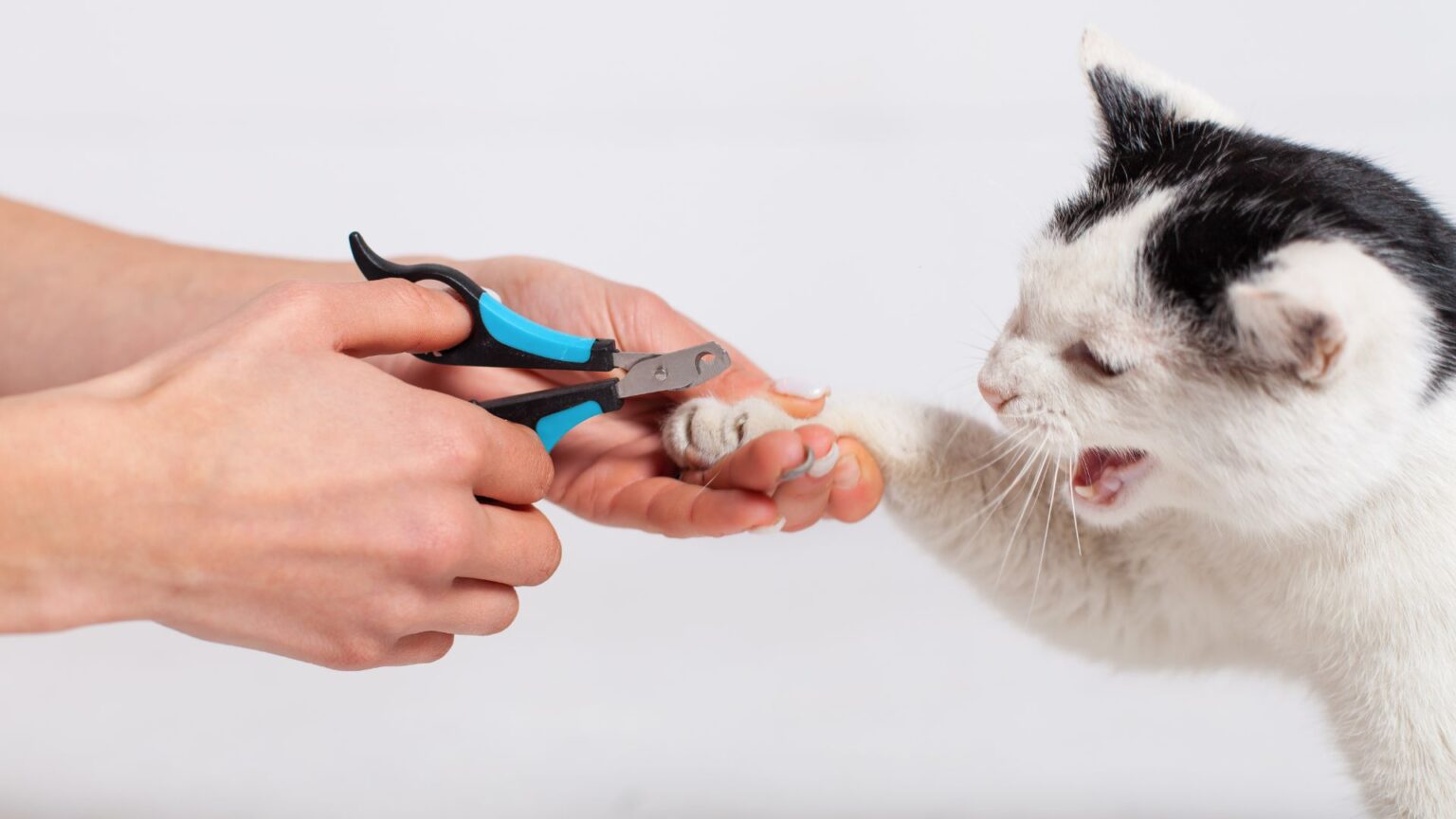Your cat’s cuddles are soft, but those tiny hooks? Less so. Trimming your cat’s claws protects paws, sofas, and your skin — and it can become a calm little ritual you both tolerate (dare we say, enjoy?). Here’s how to make it smooth, safe, and stress‑light.
Why trimming matters for your cat
Comfort first. Overgrown claws can curl and press into paw pads, which hurts and can even lead to infection. Regular trims keep each step comfy and confident.
Health and safety. Shorter claws reduce snagging on fabrics and carpets, preventing broken nails and limping. They also help seniors who can’t shed the outer sheath as easily.
Home harmony. Trimmed claws mean fewer pulls on knitwear, curtains, and your favorite armchair. Combine trims with good scratching options to redirect the instinct to scratch.
Surprising fact: Hind claws often grow more slowly and may need trimming less often than the front ones. Always check dewclaws too — they don’t touch the ground and can overgrow in a sneaky curve.
Want extra help guiding that natural scratching instinct away from your decor? Try these simple ways to protect your sofa without scolding.
Tools and timing that make trimming easier
Pick the right trimmer
- Scissor-style cat clippers: Precise, easy to control, great for most paws.
- Guillotine-style: Can give clean cuts, but be sure the blade is sharp to avoid crushing.
- Small human nail clippers: Fine for kittens or tiny claws if razor‑sharp; replace the moment they snag or crush.
Mistake to avoid: Using dull clippers. They crush and split the nail, making future trims harder and paws more sensitive.
Choose the right moment
- Trim after play or a meal, when your cat is relaxed and drowsy.
- Keep sessions short — even one or two nails per day builds a full trim in a week.
- Set up a cozy spot with a towel and soft light. Calm voice, slow movements.
Training helps so much here. Start slowly, reward generously, and train your cat gently to accept paw handling before you ever clip.
Step-by-step: a gentle claw trim
Prep and positioning
- Let your cat sniff the clippers. Treat, pause, praise.
- Place your cat on your lap or a stable surface. Some prefer facing away, tucked under your forearm.
- Press the toe pad gently to extend the claw. No twisting — that’s uncomfortable.
Find the safe spot
- Look for the translucent tip. The pink center is the quick (blood vessels and nerves). Do not cut the quick.
- Tip: For dark nails, shine a small flashlight from behind to better see the quick’s shadow.
- Clip just the sharp point at a slight angle to match the claw’s curve.
Clip with confidence
- Take tiny slices, not one big chop.
- Reward after each nail with a lickable treat.
- Stop if your cat tenses up — you can always continue later.
Scratching options are your best allies between trims. Choose the right cat tree to help your kitty maintain claws naturally and save you time.
Bonus practical trick
- Spread a thin layer of lickable treat on a silicone mat at head height. While your cat licks, you “snip and praise.” It’s a tasty distraction that keeps paws still just long enough.
If something goes wrong
Accidental quick cut
- Stay calm. Press a pinch of styptic powder or cornstarch on the tip for 10–15 seconds.
- Offer a treat and end the session. Resume on another day.
- If bleeding persists or your cat is limping, contact your vet.
Too wiggly today?
- Try a “towel burrito,” leaving one paw out. Keep it gentle and brief.
- Do one nail per nap. Consistency beats long battles.
- Ensure daily scratching posts and ramps to keep claws naturally shorter.
Understanding why your cat scratches helps you pick better setups and save your furniture. Here are the surprising reasons behind clawing and how to use them to your advantage.
Make it a positive ritual
- Frequency: Most cats need trims every 2–3 weeks; kittens and seniors may need a bit more attention.
- Routine: Same place, same towel, same reward. Predictability soothes cats.
- Front vs. back: Front claws usually need more frequent trims; check dewclaws each time.
Common error: Rushing to finish all nails in one go. Short, sweet sessions prevent battles and build trust.
For a polished routine from nose to tail, add brushing, ear checks, and dental care. Build your calm care ritual with this complete grooming guide.
When to seek help
- If claws are severely overgrown or embedded, call your vet promptly.
- If your cat is fearful or reactive, ask your vet or groomer for a demonstration.
- Never declaw. It’s painful, lifelong, and not a solution. Gentle trims and great scratchers are kinder and effective.
Quick recap you can save
- Sharp, suitable clippers + cozy timing = success.
- Tiny cuts, lots of praise, and end on a win.
- Scratching posts keep trims quicker and easier.
FAQ
How do I cut my cat’s black claws safely?
Use a flashlight behind the nail to spot the quick’s shadow, then trim tiny slivers from the tip only. When in doubt, stop early and try again later.
How often should I trim my cat’s claws?
Every 2–3 weeks suits most cats. Front claws and dewclaws often need more frequent trims than the back ones.
What can I use if I don’t have styptic powder?
Cornstarch or flour can help stop minor bleeding. Apply firm pressure for 10–15 seconds and keep your cat calm.
My cat hates trims — what now?
Break the process into micro-sessions, use a towel burrito, and pair with treats. If it’s still stressful, ask your vet or a groomer for a calm, pain‑free demo.








